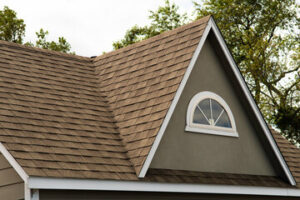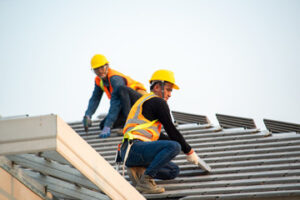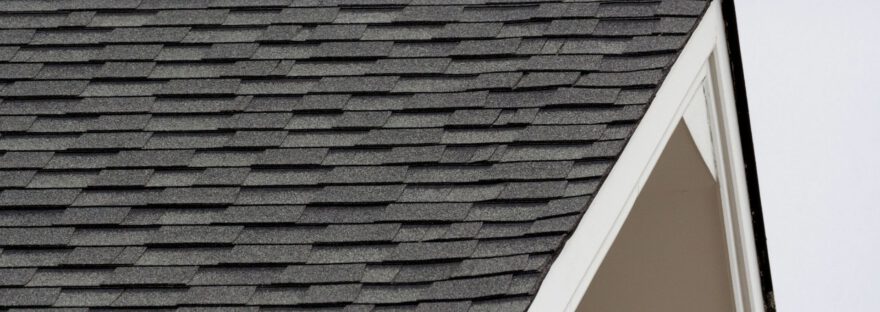Your roof protects your home, belongings, and family from the elements. It’s a substantial investment, but does it have the potential to increase your property value when you’re ready to sell?
Ultimately, it depends on local market conditions and individual buyer preferences. However, a new roof can offer several attractive features that draw buyers in. Palm Coast Roofing Company will be happy to answer any questions you have!

The roof is often the first thing that potential home buyers see. They will likely notice if the roof is in disrepair and will often lower their offer price accordingly. Fortunately, a new roof is one of the most cost-effective and easy ways to improve your home’s curb appeal. A new roof can also increase your home’s value by making it easier to sell your house faster and for more money.
Energy Efficiency
It’s no secret that a roof is an integral part of a home. It offers a durable shield of protection that keeps everything and everyone inside safe from the elements, whether rain, sleet, snow, or hail. That’s why many homeowners decide to replace their roof when it reaches the end of its lifespan or is damaged. Replacing your roof is an expensive project, however. And that’s why it’s important to consider how a new roof can increase your home value when investing.
Modern energy-efficient shingles can significantly increase the value of your home by lowering your energy costs and keeping your family comfortable. This is a feature that’s sure to attract eco-conscious buyers, who are looking for ways to save money and reduce their impact on the environment.
Real estate agents know that buyers are seeking homes with energy-efficient features and may be willing to pay a premium for them. So if you’re considering adding a new roof to your home, it’s worth the investment for the added value it can provide when it comes time to sell. And, if you install solar panels along with your new roof, the additional cost can be paid for by the energy savings from the new system.
Curb Appeal
When potential homebuyers drive up to a house, the first thing they will notice is the curb appeal. This term is used to describe how attractive a house looks from the outside, including the landscaping, walkways, driveway, sidewalk, and mailbox. A house with good curb appeal will give buyers a sneak peek at the quality of the inside and will make them want to check it out. A new roof can be a great way to improve curb appeal, making it more likely that people will stop by and take a look.
Curb appeal is important for any home, but especially if you are thinking about selling yours in the future. Studies have shown that homes with high curb appeal sell for 7% more than other similar houses. This is because people are willing to pay more for a house with good curb appeal. A new roof can be one of the best ways to increase your home’s curb appeal and boost its value.
Aside from having a beautiful yard and clean exterior, curb appeal is important because it gives a first impression of the interior of a home. It can make or break whether a buyer decides to view the inside of a home, and it can also influence how much a buyer is willing to offer for the property.
To maximize your curb appeal, you should make sure the following are in good shape:
Yard And Landscaping
Make sure that your lawn is mowed, the trees are properly trimmed, and the flower beds are well maintained. You should also keep up with weeding and mulching.
Paint/Siding
Freshen up your house with a fresh coat of paint or power wash. It is a low-cost investment that can have a big impact on a home’s appearance.
Front Steps
Having a nice paved walkway, steps, and porch can make or break a home’s curb appeal. You can re-stain or repaint the front stoop, or you can replace it entirely with tile. Be sure to choose a color and style that will complement your house. You should also be sure to hide any equipment like hoses or lawnmowers, so they don’t detract from your home’s visual appeal.
Aesthetics
Aesthetics is a field of study that considers the various aspects of visual art. This field is often influenced by cultural factors, as well as by individual preferences and tastes. Aesthetics is also a form of criticism that can be applied to works of literature, film, painting, music, and architecture. In literary criticism, aesthetics can be used to analyze a work’s intention and meaning.
Ultimately, the goal of aesthetics is to make something beautiful or appealing. This can be achieved through a variety of means, including color, shape, and texture. Aesthetics can be used to create a sense of harmony and balance in a space, or it can be used to emphasize a particular theme or message. Aesthetics can also be used to create a sense of drama or tension in a piece of art.
When it comes to real estate, aesthetics are an important consideration for homebuyers. A well-maintained and visually appealing roof can increase a home’s resale value and attract more potential buyers. On the other hand, a poorly maintained or outdated roof can detract from a home’s overall appearance and may discourage buyers from making an offer.
When it comes to aesthetics, it is important to remember that trends are always changing and that a property’s style should be flexible enough to accommodate future homeowners. For example, if polka dots are currently in style, it would be best to incorporate them into the design of your house, but make sure that you also include classic styles that will last for a long time.
Durability
Your roof is one of the most durable components of your home. It protects you and your family from the elements, including wind, rain, sleet, snow, hail, and more. It also insulates your house, and it can add beauty to the exterior of your property. Some homeowners have even incorporated green roofs, adding an extra level of durability and style to their houses.
A roof can be made from a variety of materials, including asphalt shingles, wood, slate, and metal. Each material has its benefits and drawbacks. For example, wood and slate are beautiful roofing options that can last for decades with proper care. However, they’re more expensive than other roofing materials. Asphalt shingles are another popular choice for homeowners because they’re affordable and durable. They can also be installed quickly and easily.
When it comes to selling your home, most buyers will want a roof that’s in good condition. They won’t be interested in a home that has an old or leaky roof, and they might refuse to make an offer altogether.
Getting a new roof before selling your home can increase its value, but it’s not always the best move. It’s hard to determine exactly how much a new roof will boost your home value because it depends on a variety of factors, including real estate market conditions and buyer preferences. Regardless, a new roof is one of the most important investments you can make to improve your home’s value and curb appeal. Contact your local roofers to learn more about your roofing options and how they can help you improve your home’s value.
Many different home improvement projects can add to your home’s value, including installing a kitchen or bathroom remodel. However, none of them are as important to the long-term value of your home as a new roof. A new roof can protect your home from the harsh elements, such as rain, snow, hail, and strong UV rays. It can also increase your home’s energy efficiency, allowing you to save on heating and cooling costs.
A new roof can also dramatically boost your home’s curb appeal, which is one of the most important factors for potential homebuyers. A new roof can make your house look brand-new and in great condition. It can also draw more interest from potential homebuyers, allowing you to sell your house much faster and at a higher price.
Even if you do not plan to move shortly, it is still worth investing in a new roof if you’re thinking of selling your home shortly. It is not uncommon for a buyer’s building inspector or home appraiser to notice signs of a faulty roof and stop the sale before it even begins. By investing in a new roof with an experienced roofing company, you can ensure that your property’s value is not dragged down by a bad roof.
In addition to a new roof’s ability to boost your home’s curb appeal, it can also make your home more energy efficient, which will increase the resale value and help you save on your utility bills. Additionally, a new roof is more durable than an older roof and may have a warranty that will be transferable to the next owner of your home.
A new roof can also increase your home’s resale value by making it more comfortable and attractive to live in. If you have a beautiful, custom-designed roof, it can make your home stand out from the crowd and give buyers something to brag about in their listing. Additionally, homeowners’ associations often have requirements for curb appeal and a new roof can help you meet these requirements.


